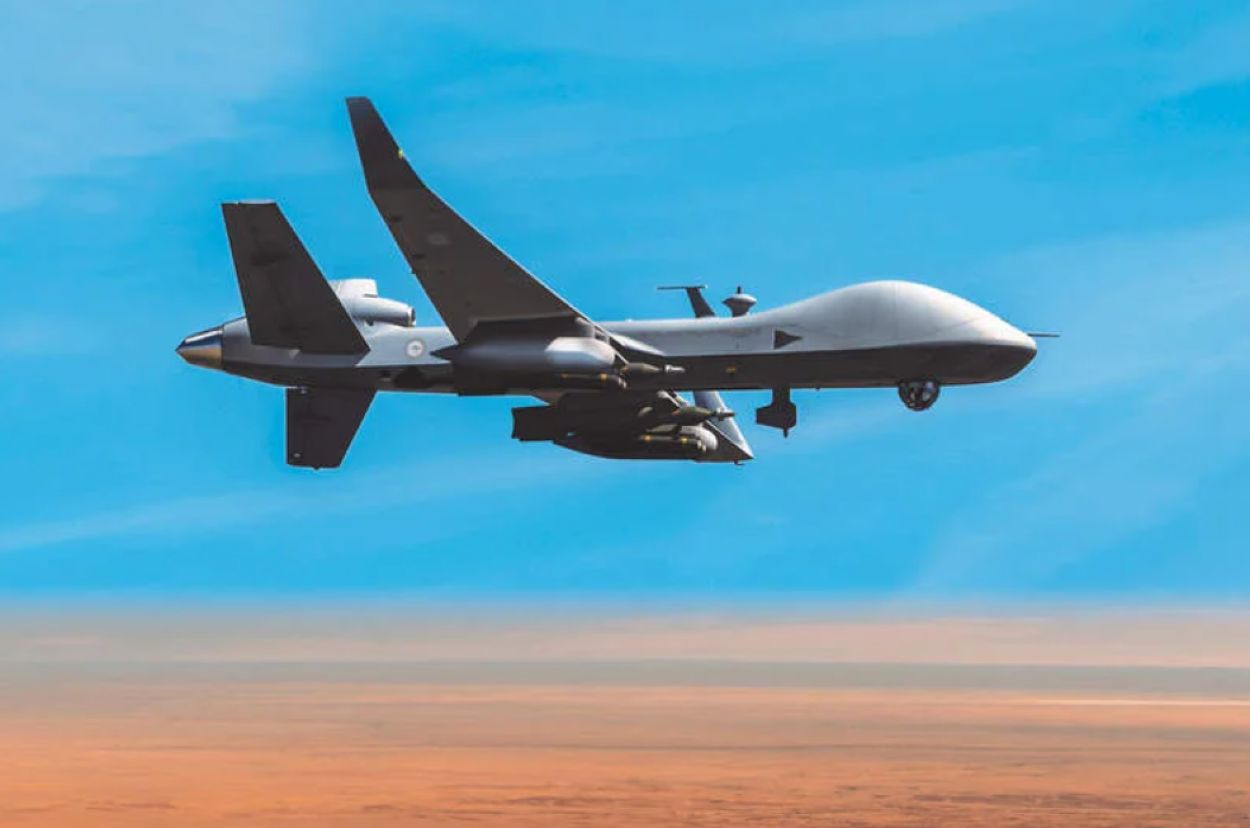As part of its continuing military modernization triggered by Russia’s invasion of Ukraine, Poland has now set its sights on purchasing the MQ-9B SeaGuardian Unmanned Aerial Vehicle (UAV) from the United States-based General Atomics.
BrahMos: Thailand Shows ‘Keen Interest’ In Indo-Russian Supersonic Missiles As Delhi Aggressively Pitches Them To ASEAN
Senior Polish military official Maj. Gen. Cezary Wisniewski revealed this information, a Breaking Defense report said. In October 2022, the Polish Ministry of National Defence said it would purchase the MQ-9B SeaGuardian UAV. Now, Wisniewski disclosed to reporters on November 6 that an appropriate contract would now be signed in a few days.
The Polish Ministry of National Defence announced in October last year that it was leasing the MQ-9A Reaper drone from General Atomics as a stopgap solution until a purchase of the MQ-9B is finalized between the two parties.
At the time, Mariusz Błaszczak, the head of the Polish Ministry of Defence, said that the lease was a temporary solution until decisions were made on acquiring the target reconnaissance system.
Leased due to an urgent operational need, the medium-altitude, long-endurance (MALE) MQ-9A aircraft currently undertakes reconnaissance flights on Poland’s eastern border. Poland received the first of its leased MQ-9A in February this year.
Maj. Gen. Wisniewski, the deputy commander of the Polish Armed Forces, said, “Right now, we are working on a contract with General Atomics for the MQ-9 Bravo. The contract will be ready in two to three weeks. It’s not a big number [of aircraft], and we don’t need a big number actually because our ISR workhorse is the [Bayraktar] TB2 [MALE] drone.”
Poland purchased 24 TB2 UAVs manufactured in Turkey in May 2021 and received three delivery batches. The purchase of cutting-edge UAVs, including the Bayraktar TB2 and the MQ-9B, is part of an extensive modernization of the military undertaken by the Polish Ministry of National Defense.

However, its interest in the MQ-9B platform may also stem from its utility and presence in Europe as part of NATO policing missions. For instance, the MQ-9 is an invaluable tool for the US troops in Europe.
The US Department of Defense (DoD) started deploying more Reapers on the continent in 2021 as it reduced the number of troops there. The intelligence, monitoring, and reconnaissance (ISR) capabilities of the UAV were emphasized once again after the Russian invasion.
In addition to conducting maritime surveillance in the Black and Baltic Seas, the Reaper frequently patrols the eastern front of NATO. In March this year, two Russian Su-27 fighter jets intercepted an MQ-9 over the Black Sea, damaging a propeller of the drone and forcing the pilots to down the UAV in the sea.
Poland has set its sights on the MQ-9B variant of the Reaper, designed to carry out combat patrols over the seas. Poland is also additionally conducting a market assessment of ‘Loyal Wingman’ aircraft in preparation for the start of a comprehensive purchase program, which may take up to five years.
Further, Wisniewski also noted that Poland has pledged to purchase an additional 32 fighter jets. But, it will take longer to decide which planes to buy because a new administration has not yet taken office.
He stated that the F-15EX from Boeing and the Eurofighter Typhoon are considered for the new fighter jet acquisition, but a second F-35 purchase was also on the table.
Regarding the MQ-9B procurement, Poland is not the only nation looking to acquire these drones to monitor its rival, Russia. India is using MQ-9B drones that it leased from General Atomics, and it plans to purchase several more to keep a watch on China.
India Is Also Keen On MQ-9B Purchase
According to September reports in Indian media, New Delhi has started purchasing high-tech drones from the US and sent a letter of request to Washington for 31 MQ-9B remotely piloted aircraft systems.
The letter outlines the terms of the procurement, equipment specifications, and tri-service criteria. The officials reportedly said that India will start negotiations with the US after receiving a letter of acceptance from it, considering the terms and price that Washington has provided other interested countries.
The United States and India released a joint statement on June 22 that included information on the potential arrangement.
The drone agreement will involve technology transfer and aid in filling the technological gaps in the Defense Research and Development Organization’s local development of such systems. The purchase of drones will fall under Washington’s government-to-government selling of US-built platforms through the foreign military sales program.
Thirty-one new platforms will be divided among the Indian Air Force, Army, and Navy. As per media reports, 15 platforms will go to the Navy and eight each to Air Force and Army.
The Indian Navy leased two MQ-9 Sea Guardian High Altitude Long Endurance (HALE) drones from the US in 2020 to deter the expansion of the Chinese Navy’s presence in the Indian Ocean Region (IOR). The drones were intended to complete the “kill loop” by putting the “seeker to shooter” idea into practice.
These drones have been primarily used in northeastern India and the Ladakh region, where Indian forces have been engaged in combat with Chinese troops for more than three years. The Indian Navy flew land missions along the LAC at the request of the Indian Army. Patrols in the Indo-Pacific region have constituted the second significant deployment.
Although their utility and role in conducting ISR operations along the land borders has been called into question by military experts, there is enthusiasm among officials to purchase the drone as soon as possible, much like its European counterpart Poland.
- Contact the author at sakshi.tiwari9555 (at) gmail.com
- Follow EurAsian Times on Google News